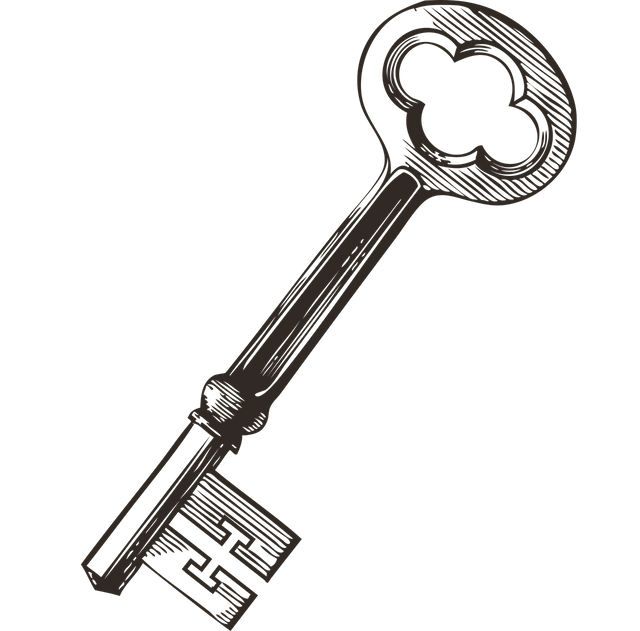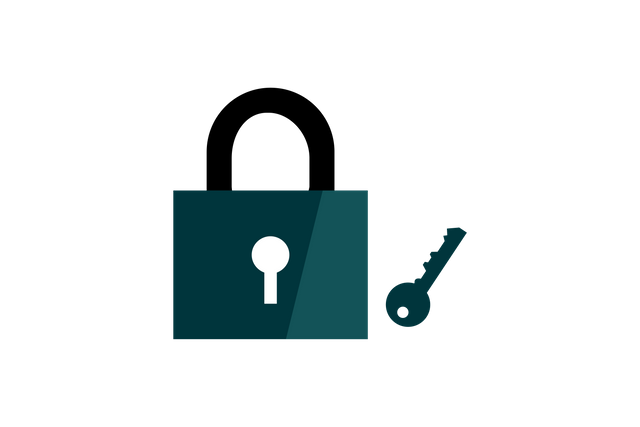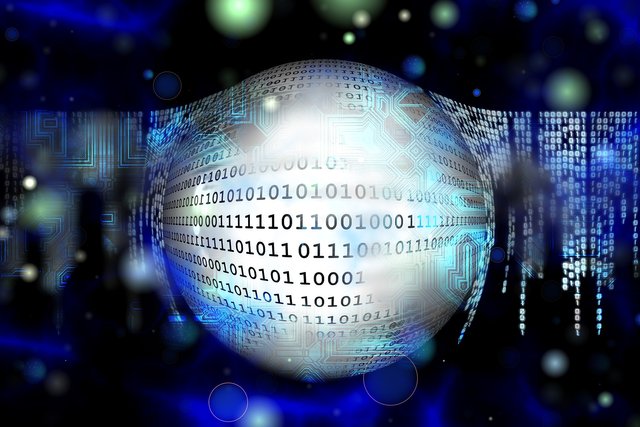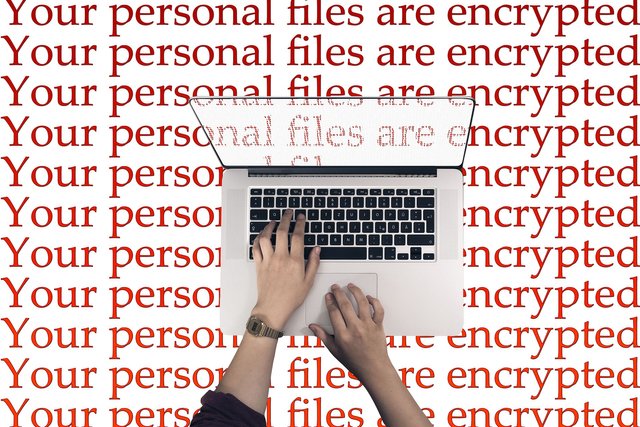Digital Signature & Encryption
In this post, I will take a gander at the basics behind sending really encoded messages and archives that can be confirmed with an advanced mark. The thought is to demonstrate to you the ideas so you comprehend what is happening in the background to influence a safe correspondence to channel over email.
So why invest the energy in this? As we change to accomplishing more business over the web, secure correspondences will turn out to be substantially more imperative. Regardless of whether you don't have an utilization for encryption at the present time, you presumably will throughout the following 3 to 5 years (if not previously). There is a considerable measure of significant worth in understanding why email encryption is secure– regardless of whether you don't see all the convoluted math behind it.
I think that its baffling that so few individuals and organizations utilize email encryption and an advanced mark on their messages. In the event that organizations would utilize scrambled messages, they could simply send me a PDF of my bill as opposed to expecting me to login and download my bill from their site. A significant number of the procedures that as of now require imprinting on dead trees and after that utilizing dead dinosaurs to transport sheets of paper through the mail should be possible electronically if more individuals would utilize encryption. This article is me doing my little part to help bring issues to light of how encryption functions. In the event that you need to enable spare to paper and think this article is helpful, it would be ideal if you pass it on to another person.

Image Source: Pixabay
Encrypting a Document

To utilize an advanced mark or encryption you should have a computerized id otherwise called an advanced authentication. An advanced id/computerized declaration used to complete two things. Initially, it can be utilized to do email encryption or scramble records with the goal that they must be perused by the individual they are expected for. Second, it can be utilized to "sign" or place an advanced mark on an archive to ensure that it lands in a similar state it was initially sent and nobody has included or changed things.
 Image Source Pixabay
Image Source Pixabay A computerized id or advanced testament comprises of an open and private key. Your open key is imparted to everybody. Your private key is kept private. These keys are content archives brimming with what seems, by all accounts, to be arbitrary numbers and letters, yet with the best possible calculation, these numbers and letters have an exceptionally remarkable property.
In the event that you take a record and run it through a calculation with your open key, you get back a scrambled report or an encoded email.
When it is encoded, the general population key can't be utilized to unscramble the archive. The procedure is one way so it doesn't make a difference if other individuals have the general population key, they can't read the report.
To decode the archive you should have the private key. In the event that you give the scrambled record to a calculation with the private key, you will get back the first report.
An Email Encryption Illustration
Lets begin with Tom and Suzie. They need to impart safely to shield Hitler from perusing their messages. They will utilize email encryption to convey.tom-sends-open keyFirst Tom, sends Suzie his open key. This ordinarily happens consequently when Tom sends Suzie an ordinary email message. Their email programs handle sending Tom's vital and recording it on Suzie's side of things. At the point when Suzie sends Tom a consistent message, Tom gets her key also.
Suzie takes Tom's open key and uses it to encrypt a vital message. At that point she messages the encrypted message to Tom.
However, pause! Hitler captures the message by invading Suzie's ISP and breaking into her email. He presently has the encrypted email message that Suzie sent to Tom. Hitler additionally has Tom's open key that Tom sent to Suzie. In any case, regardless of what Hitler does with people in general key, he can't decode the message. The main thing that can decrypt the message is the private key that Tom keeps safe. Email encryption keeps Hitler from perusing the message– despite the fact that he has a duplicate of the email that was transmitted over the web.
At the point when Tom gets the message from Suzy, he takes his private key and uses that to decode the message. He would now be able to peruse Suzie's email. It doesn't make a difference who else gets a duplicate of the email that Suzie sent. Email encryption protects that Tom is the special case who can open it as long has he doesn't share his private key. In the event that he needs to answer to Suzie, he essentially utilizes her open key to encode his answer and sends it back to her.
Marking a Document with a Digital Signature

 Image Source: Pixabay
Image Source: Pixabay With a comprehension of how archives can be scrambled, we can take a gander at how to "sign" a record utilizing a computerized signature. This is altogether different than a filtered signature that just appends a picture of your composed mark to an archive or email. An encoded report completes two things.
- It ensures that the archive wasn't changed in course.
- It ensures that nobody else can read the archive.
For a considerable measure of correspondence, thing two isn't vital or even wanted. For instance, on the off chance that I need to communicate something specific out to 25 individuals, odds are entirely high that it isn't to a great degree classified. Indeed, sending a different message to every individual encoded with their open key may be a significant weight. Notwithstanding, regardless I may need every beneficiary to be ensured that the record originated from me and that it wasn't changed in transit– we need to put an advanced mark on it that says ensures who sent it and that it wasn't adjusted.
Outside of marked email, I might need to post a message on a site that can be perused by the existence where anybody can check to ensure that the message hasn't been changed from when I composed it and affirm that it was genuinely composed by me. A somewhat extraordinary case of this is the point at which an organization posts a bit of programming or a fix for existing programming. The general population who will download it need some approach to realize that they are getting a honest to goodness record and not an infection that was presented by programmers on trap individuals.
This is the place marking a record (or document) becomes an integral factor. Marking a report (applying your computerized mark to it) ensures the initial two things on the rundown, yet does it in a way that enables anybody to peruse it. Individuals can check your advanced mark without getting a computerized id or advanced authentication for themselves.
This can be hard to clarify, so I am will rearrange the math a bit. My rendition won't be so secure as what is really utilized, however it will give you a decent broad thought of how it works.
Checksums
In the first place, how about I discuss checksums. A checksum is a straightforward method to send an additional snippet of data alongside a few information that can be utilized to ensure that the information is the same on the two sides. In human terms, this is somewhat similar to requesting that somebody rehash a number back to you via telephone. While rehashing data back works fine for short numbers, it could be somewhat alarming on the off chance that you have a lot of information. So we make an alternate way. Suppose that, for reasons unknown, I'm attempting to give you the estimations of 100 checks via telephone. I'm understanding them from Exceed expectations and you are composing them into Exceed expectations. At last, we need to ensure that we didn't miss anything. I could have you rehash every one of the numbers back to me, however that would take quite a while. Rather, I may request that you give me the aggregate. On the off chance that your aggregate matches my aggregate, at that point one of two things happened:- We effectively exchanged the numbers verbally.
- We committed a few errors that flawlessly counteracted each other.
Since choice two is really far-fetched when managing a vast rundown of numbers, we can expect (with a sensible level of assurance) that we didn't commit an error.
PCs utilize checksums comparably. Back in the times of modems, PCs would send a 8 bit byte where the last piece was a checksum. Along these lines, the PC may send a parallel message that resembled this:
01101010
The initial 7 bits contained the information: 0110101. The last piece is the checksum was utilized to tell if there were an even or odd quantities of ones present in the information. For this situation we are utilizing a 0 to state that there are a significantly number of ones. In the event that the accepting PC got a byte where the quantity of even bits and the checksum bit dissented, it would request that information to be sent once more.
This kind of approach decreases unintentional blunders. Nonetheless, it does nothing toward keeping somebody from deliberately changing the information. On the off chance that you needed to change the information on the way, it is easy to flip the checksum bits to coordinate whatever you needed to send in the information. We require a method for creating a checksum compose esteem that is difficult to counterfeit.

Image Source: Pixabay
Hashes for Digital Signature

In straightforward shape, a hash is a calculation (or set of steps) that you can run a bit of information through (content, a record, and so on.) and get out a number that speaks to the first. You can't reproduce the first from the number, yet for most handy purposes you can utilize that number to speak to the info. As it were, it will be exceptionally hard to discover another info document (or content) that will deliver a similar yield.
We should develop a basic hash of the accompanying content:
The snappy dark colored fox bounced over the sluggish dog.
Our hash will be made by duplicating the quantity of letters by the quantity of words.38 letters
9 words
38 x 9 = 342
So now on the off chance that I send you this message, I can incorporate the number 342. You can figure it out on the message you get and it will give you an entirely smart thought if the message is the same as what was sent.
Clearly, this sort of arrangement will just ensure against unexpected changes in the information. On the off chance that somebody changes the email in course, they could simply change the number "342" to coordinate whatever the hash is for their altered message.
In the event that we need to secure against this, I can send the hash an incentive through an alternate channel. For instance, I could send you the message by means of email and afterward call you on a protected telephone line and say, "the hash esteem is 342". That way in the event that somebody needed to adjust the message, they could just change it to something that delivered a hash estimation of 342. (In our exceptionally basic hash calculation, this would be hard, however feasible. With the mind boggling hash calculations that are really utilized, it would be unimaginable, for every single handy reason.)
Clearly, it is wasteful on the off chance that I need to ring you on the telephone. We require some approach to put a protected divert in the email. In the event that I endeavor to scramble the hash number with your open key, the message is just decipherable by you– I should simply encode the entire message. On the off chance that I scramble it with my open key, at that point I'm the special case who can read it– not especially helpful either.
In any case, look what happens when I encode it with my private key.
We currently have the esteem 342 scrambled in a way that can be opened by anybody with my open key. Since my open key is the main thing that can decode that esteem, it promises them that I was the person who initially scrambled the number 342.
On the off chance that somebody needs to change the message and change the hash esteem, they would need to have the capacity to encode it with my private key.
Along these lines, when you send messages marked with a computerized signature, the hash esteem ensures that the message hasn't been changed. Encoding the hash an incentive with your private key enables anybody to check that the hash esteem, itself, hasn't been changed utilizing your open key. This is regularly taken care of naturally by your product, and it will give you a notice on the off chance that you get a message where unscrambling the hash esteem creates an alternate number. The scrambled hash esteem is included as a little connection or added to the base of the email.
Conclusion

 Image Source Pixabay
Image Source Pixabay As I said previously, this article is me attempting to do my part to enable society to move from paper to computerized. On the off chance that you need to help, if it's not too much trouble take a couple of minutes to impart this to another person.
References
scanned signaturemath
Thawte or Comodo
paper